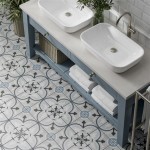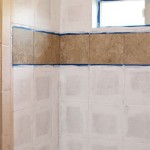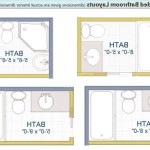Bathroom Sink Countertop Combo: A Comprehensive Guide
The bathroom sink countertop combo is a fundamental element in bathroom design, offering both functionality and aesthetic appeal. Selecting the right combination requires careful consideration of various factors, including material, size, style, and budget. This article provides a comprehensive overview of bathroom sink countertop combos, exploring different options and offering guidance for making informed decisions.
Understanding the Key Components
A bathroom sink countertop combo consists of two primary components: the countertop and the sink itself. The countertop provides a surface for the sink to be mounted on and offers surrounding space for toiletries and other bathroom necessities. The sink serves as the basin for washing hands, face, and other personal hygiene tasks. The interplay between these two components significantly impacts the overall look, feel, and usability of the bathroom.
The countertop material dictates not only the visual aesthetic but also the durability and maintenance requirements. Common countertop materials include granite, quartz, marble, solid surface, laminate, and tile, each with its own set of advantages and disadvantages. Similarly, the sink style, whether undermount, vessel, drop-in, or integrated, influences the installation process, the available counter space, and the overall design aesthetic.
Properly integrating these components requires measuring the available space accurately, considering plumbing requirements, and understanding the aesthetic goals for the bathroom. A well-planned combo can maximize functionality, enhance the visual appeal, and increase the overall value of the home.
Exploring Countertop Material Options
The choice of countertop material is a crucial decision that affects both the appearance and performance of the bathroom sink countertop combo. Each material offers a unique combination of style, durability, and maintenance requirements.
Granite: Granite is a natural stone known for its durability and resistance to heat and scratches. It offers a luxurious and timeless look, with a wide variety of colors and patterns available. However, granite is porous and requires sealing to prevent staining. It can also be more expensive than other countertop materials.
Quartz: Quartz is an engineered stone composed of natural quartz crystals and resin. It is highly durable, non-porous, and resistant to stains, scratches, and bacteria. Quartz offers a consistent color and pattern, making it a popular choice for modern bathrooms. While generally more expensive than laminate or solid surface, it is often considered a worthwhile investment due to its longevity and low maintenance.
Marble: Marble is another natural stone prized for its elegant appearance and unique veining. It is a softer stone than granite and more susceptible to scratches and etching from acidic substances. Marble requires regular sealing and careful maintenance to preserve its beauty. While its aesthetic appeal is undeniable, the higher maintenance demands make it a less practical choice for some homeowners.
Solid Surface: Solid surface materials, such as Corian, are manufactured from acrylic polymers and mineral fillers. They are non-porous, seamless, and easy to clean. Solid surface countertops are available in a wide range of colors and patterns and can be fabricated into custom shapes and sizes. They are less expensive than natural stone but may be more susceptible to scratching and heat damage.
Laminate: Laminate countertops consist of a plastic laminate layer bonded to a particleboard or MDF core. They are the most affordable countertop option and come in a vast array of colors and patterns. Laminate is relatively easy to clean but is susceptible to scratches, stains, and water damage. It is generally less durable than other countertop materials and may need to be replaced more frequently.
Tile: Tile countertops offer a unique aesthetic and allow for customization with different tile sizes, shapes, and colors. Tile is durable and water-resistant but requires grout lines that can be difficult to clean and maintain. Grout can also be prone to staining and cracking over time. While tile can be a cost-effective option, the maintenance requirements should be carefully considered.
Selecting the Right Sink Style
The sink style significantly impacts the appearance and functionality of the bathroom sink countertop combo. There are several sink styles to choose from, each with its own installation requirements and aesthetic characteristics.
Undermount Sinks: Undermount sinks are installed below the countertop, creating a seamless and clean look. This style allows for easy cleaning of the countertop, as crumbs and spills can be wiped directly into the sink. Undermount sinks require a solid surface countertop material, such as granite, quartz, or solid surface, to support the sink's weight. They typically offer a more modern and sophisticated aesthetic.
Vessel Sinks: Vessel sinks sit on top of the countertop, resembling a decorative bowl. This style can add a unique and artistic element to the bathroom. Vessel sinks require a faucet that is tall enough to reach over the rim of the sink. They can be installed on a variety of countertop materials, but careful consideration should be given to the sink's size and shape to ensure it is proportional to the countertop.
Drop-In Sinks: Drop-in sinks, also known as self-rimming sinks, are installed by dropping them into a pre-cut hole in the countertop. The rim of the sink rests on the countertop, providing support. Drop-in sinks are relatively easy to install and can be used with a variety of countertop materials. They are a more traditional and budget-friendly option compared to undermount or vessel sinks.
Integrated Sinks: Integrated sinks are made from the same material as the countertop, creating a seamless and unified look. This style is typically found with solid surface countertops and offers a clean and modern aesthetic. Integrated sinks are easy to clean and maintain, as there are no seams or crevices where dirt and grime can accumulate.
Factors to Consider When Choosing a Combo
Selecting the right bathroom sink countertop combo involves careful consideration of several factors to ensure the chosen combination meets the homeowner's needs and preferences.
Budget: The budget is a primary consideration when selecting a bathroom sink countertop combo. Countertop materials vary significantly in price, with natural stone options like granite and marble typically being more expensive than laminate or solid surface. Sink styles also vary in price, with undermount and vessel sinks often being more costly than drop-in sinks. Establishing a clear budget beforehand will help narrow down the options and prevent overspending.
Size and Layout: The size and layout of the bathroom will influence the size and style of the countertop and sink. In small bathrooms, a smaller countertop with a single sink may be the most practical option. In larger bathrooms, a larger countertop with double sinks may be desired. It is essential to measure the available space accurately and consider the placement of plumbing fixtures when planning the layout.
Style and Aesthetics: The style and aesthetics of the bathroom should be considered when selecting a sink countertop combo. The chosen material and style should complement the overall design of the bathroom, whether it is modern, traditional, or transitional. Consider the color scheme, cabinetry, and other fixtures in the bathroom to create a cohesive and visually appealing space.
Durability and Maintenance: The durability and maintenance requirements of the countertop material should be considered, especially for high-traffic bathrooms. Choose a material that is resistant to stains, scratches, and water damage. Consider the cleaning and sealing requirements of the material to ensure it is manageable for the homeowner. Non-porous materials like quartz and solid surface are generally easier to maintain than porous materials like granite and marble.
Installation: The installation process of the sink countertop combo should be considered, especially for DIY projects. Some sink styles, such as drop-in sinks, are relatively easy to install, while others, such as undermount sinks, require more specialized skills and tools. If unsure about the installation process, it is best to hire a professional to ensure the combo is installed correctly and safely.
Resale Value: While not always the primary concern, selecting a durable and aesthetically pleasing bathroom sink countertop combo can increase the resale value of the home. Upgrading to higher-quality materials like granite or quartz can be seen as an investment that will pay off in the long run. Consider the overall value of the home and the target market when making decisions about bathroom renovations.

5 Ideas For An Eco Friendly Vanity Top Makeover Native Trails

36 White Bathroom Vanity With Sink Combo Ceramic Countertop Cabinet Mirror Faucet Drain Com

Hanover Callimont 47 Vanity Cabinet With Sink Combo For Bathroom Powder Room Pre Assembled Storage Double Basin 2 Accent Mirrors Blue Hanvn0106 0bl Com

Elecwish 28 Inch Wall Mounted Bathroom Vanity And Sink Combo With Mirror Chrome 1 5gpm Water Saving Faucet Pop Up Drain Set Modern Lavatory Floating Counter Top Com

Bathroom Vessel Sink Tempered Ceramic Basin Bowl Faucet Drain Combo

Vama European Hotel Natural Carrara Marble Separate Countertop And Shelf Bathroom Vanity Set Combo China Luxury Sintered Stone Top Furniture Made In Com

How To Choose The Right Bathroom Sink

Farmington 61 Vanity Combo Sink Countertop All In One Wallandtile Com

Pin On B A T H R O M

Dropship F R 30 Bathroom Vanity And Sink Combo White With Inch Cabinet Marble Countertop 3 Colors Available Blue Gray To At A
Related Posts







